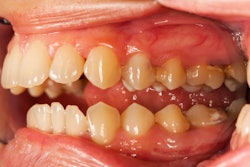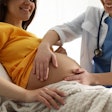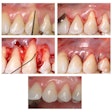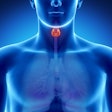Patients with periodontitis may have an 80% greater risk of experiencing migraines compared to those with healthy gums, according to a review recently published in the European Journal of Neurology.
Furthermore, increased inflammatory markers may explain why gum disease patients may be more likely to experience migraines, the authors wrote.
“Through this systematic review, we can observe that a relationship between migraine and periodontitis exists,” wrote the authors, led by Gabriel Bernat Camps-Plomer of the University of Valencia in Spain (Eur J Neurol, October 22, 2025, Vol. 32:10, e70391).
To examine the link between periodontitis and migraines, researchers conducted a systematic review using four electronic databases and meta-analysis. Studies were included if they assessed gum health in migraine patients, used periodontal indexes, and diagnosed migraines based on established headache classifications or by specialists, they wrote.
Eight studies met the inclusion criteria for the review, and six were suitable for meta-analysis. The review focused on studies that evaluated periodontal status specifically in migraine patients. Both migraine and periodontal diagnoses were required to follow standardized clinical criteria to ensure consistency across the research.
All of the studies reviewed found a significant link between chronic migraine (CM) and periodontitis, with gum disease being more common in patients with CM than in those without migraines. Patients with both conditions also showed higher periodontal inflamed surface area values compared to healthy controls, they wrote.
Elevated inflammatory markers, including procalcitonin, pentraxin 3, sTWEAK, interleukin-6, and calcitonin gene-related peptide, were observed in these patients. Also, higher serum leptin levels were associated with worse gum health indicators, including probing pocket depth and clinical attachment loss. The analysis found that periodontitis increased the risk of migraine by 80%, with a significant odds ratio (OR) (OR = 1.8; 95% confidence interval, 1.4 to 2.32; p < 0.001).
However, the review had limitations. Factors that may affect migraine severity, like stress and alcohol use, were not examined in the included studies, the authors added.
“Future research could focus on this association with a design that encourages investigating the binding factors in both pathologies,” they concluded.




















